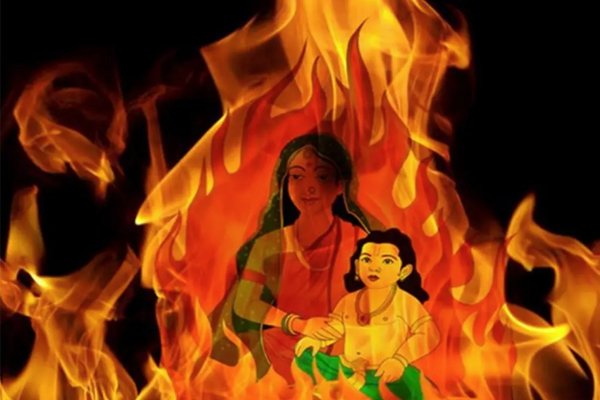Holika Dahan in the Bhadra period is considered inauspicious. As per astrologers, this is the time that is not auspicious to initiate work. Now meanwhile, Holashtak has also started from 10th March, which will remain till 18th March.
On the day of Holika Dahan, on March 17, there will be a shadow of Bhadra on Falguni Purnima. For this reason, combustion will not take place at dusk. According to scholars, only one hour and ten minutes will be available during the Bhadra period for Holika Dahan. On the 18th, the Udaykalin date will remain Falgun Purnima. Dhulandi will happen on this date.
Auspicious Time
Astrologers told that Bhadra will remain from 1.23 pm to 1.18 pm on March 17. Meanwhile, the tail period of Bhadra will be from 9.03 pm to 10.13 pm. Due to this, due to the effect of Bhadra in the evening hours, Holika cannot be burnt. Bhadra Yoga is considered inauspicious in the scriptures.
Bhadra Dosha is considered on the festival of Rakshabandhan and Holi. This time when Bhadra will remain in the tail period, then it will be best to do Holika Dahan. It is believed that the effect of Bhadra diminishes during the Pooch period. After the end of Bhadra, Holika Dahan can be done after 1.23 pm.
At the same time, on March 18, when sunrise is 6:02, the full moon will enjoy, while on the morning of March 19, the value of Pratipada date will be found. In such a situation, the festival of Rangbhari Holi will be celebrated on March 19, but in some places, the festival of colors will be celebrated on March 18 as well.
Inauspicious time
According to the legend of Holi, Holika Dahan is considered inauspicious during Bhadra period. Astrologers told that at this time auspicious works like marriage, home entry, foundation, god prestige etc. Now meanwhile, Holashtak has also started from 10th March, which will remain till 18th March.
At the same time, people were not able to celebrate the festival of Holi due to corona for two years, this time due to the slow pace of corona, people are in a mood to celebrate the festival fiercely this time.
Worship method and material
Ingredients: A lot of water, a garland made of cow dung, akshat, gandh, flowers, garlands, roli, raw yarn, jaggery, whole turmeric, moong, batashe, gulal, coconut and wheat earrings.
Keep all the worship materials in a plate along with a bottle of water. Sit at the place of worship facing east or north. After that sprinkle water on the puja thali and on its own and chant the mantra ‘Om Pundarikaksha: Punatu’ thrice. Now take a vow with water, rice, flowers and a coin in your right hand. Then remember Ganesha with flowers and rice in the right hand. After Ganesh Puja, remember Goddess Ambika and chant the mantra ‘Om Ambikayai Namah Panchopchararthe Gandakshatpushpani Sarmapayami’.
While chanting the mantra, apply Roli and rice on the flower and offer it to Goddess Ambika with fragrance. After this, now remember Lord Narasimha. While chanting the mantra, apply Roli and rice on the flower and offer it to Lord Narasimha. After this, now the devotee should remember Prahlad. Apply roli and rice on the flower and offer it to the devotee Prahlad.
After this, stand in front of Holika and pray with folded hands. Offer rice, incense, flowers, moong dal, pieces of turmeric, coconut and a garland made of cow dung, also known as Badkula or Gulari, to Holika. Now while circumambulating Holika, tie three, five or seven rounds of raw yarn around it. After this, offer the water of the lota completely in front of the Holika pile.
After that Holika Dahan is done and people go around Holika. After which the blessings of the elders are taken. People circumambulate Holika and offer new crops and roast them in the bonfire. Roasted grains are eaten as Holika Prasad.
The information given in laatsaab.com is based on religious beliefs and folk beliefs, there is no scientific proof of this. It has been presented here keeping in mind the general interest of the people.

